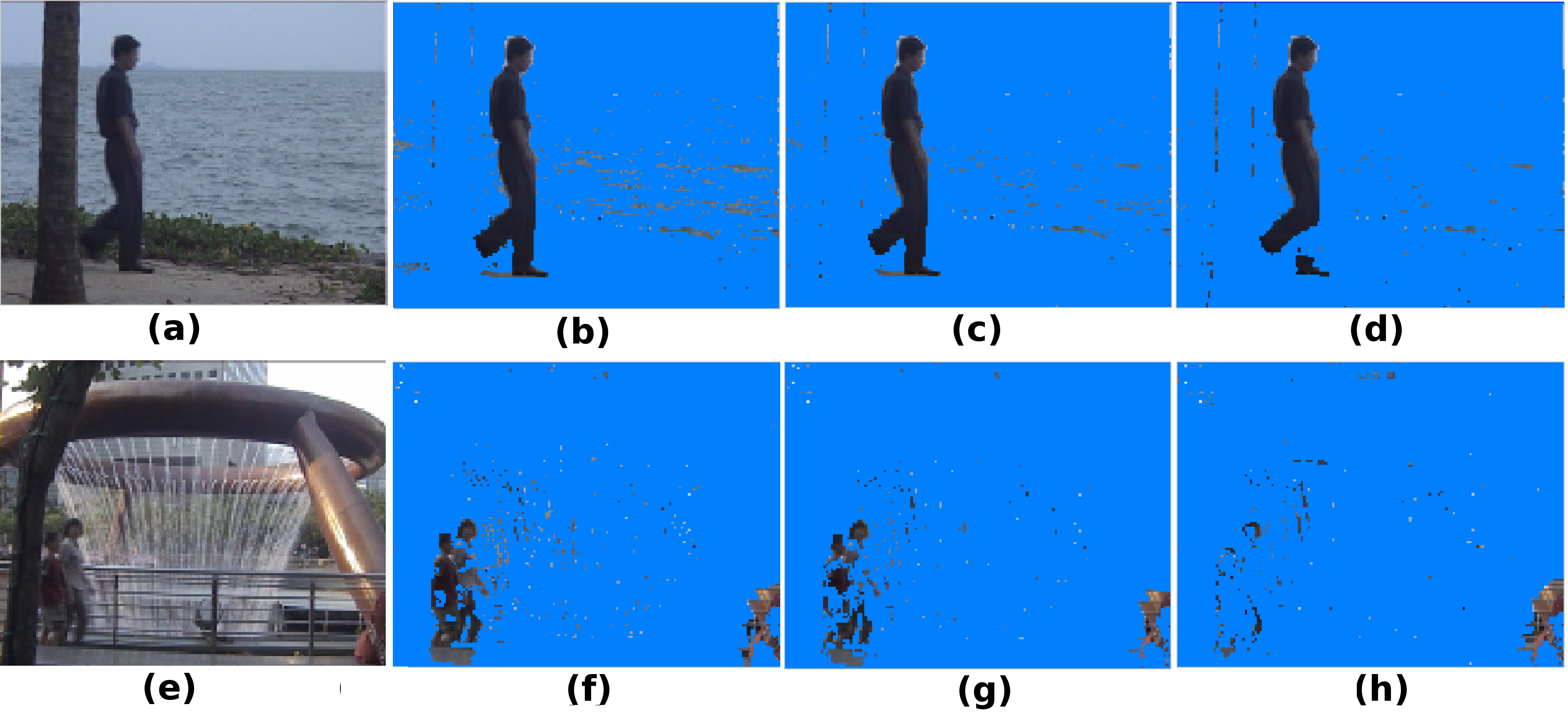Background Subtraction
Overview
Recent work on background subtraction has shown developments
on two major fronts. In one, there has been
increasing sophistication of probabilistic models, from mixtures
of Gaussians at each pixel, to kernel density estimates
at each pixel, and more recently to joint domainrange
density estimates that incorporate spatial information
. Another line of work has shown the benefits of
increasingly complex feature representations, including the
use of texture information, local binary patterns, and recently
scale-invariant local ternary patterns. In this
work, we use joint domain-range based estimates for background
and foreground scores and show that dynamically
choosing kernel variances in our kernel estimates at each
individual pixel can significantly improve results. We give a
heuristic method for selectively applying the adaptive kernel
calculations which is nearly as accurate as the full procedure
but runs much faster. We combine these modeling
improvements with recently developed complex features
and show significant improvements on a standard backgrounding
benchmark.

Faculty
Graduate Students
References
-
Manjunath Narayana, Allen Hanson, and Erik Learned-Miller.
Improvements in Joint Domain-Range Modeling for Background Subtraction
Proceedings of the British Machine Vision Conference (BMVC), 2012.
[pdf]
-
Manjunath Narayana, Allen Hanson, and Erik Learned-Miller.
Background Modeling using Adaptive Pixelwise Kernel Variances in a Hybrid Feature Space
IEEE Conference on Computer Vision and Pattern Recognition (CVPR), 2012.
[pdf]

